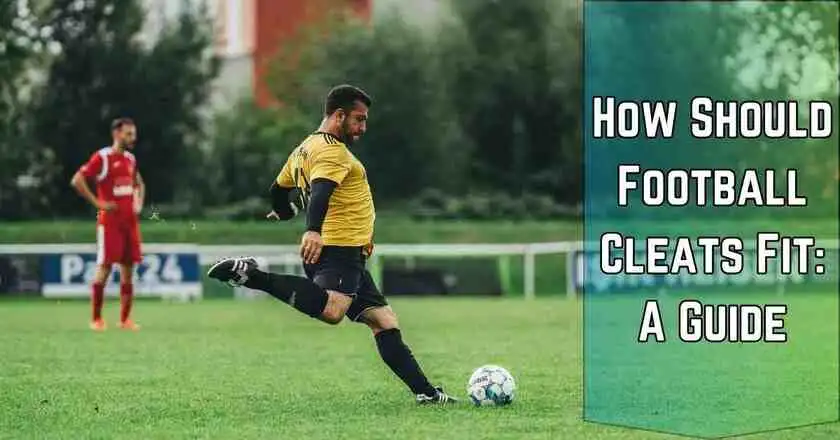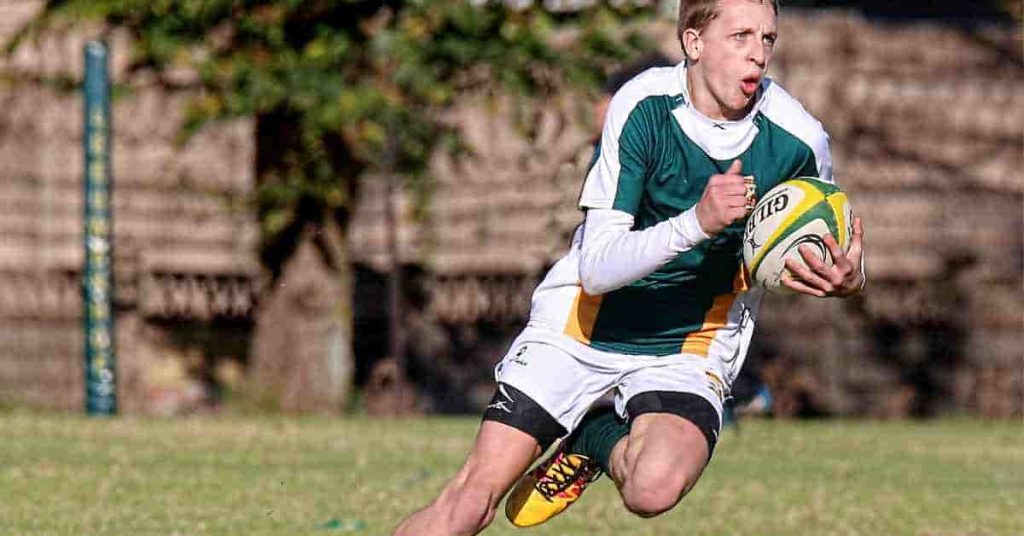
Nothing can impact your game more than a good choice of cleats. Good-fitting football cleats are key in maximising performance, avoiding injuries, and staying comfortable during the game. But what are the proper football cleat sizes? It’s one of the things players always want to know when choosing their shoes.
In this guide, we’ll show you how to pick the perfect football cleats and explain the key things to look out for, such as whether cleats run small,how should football cleat fit, and whether they should be tight or loose. By the time we wrap up, you’ll be ready to locate the best fit for your football cleats and maximise your performance on the gridiron.
Why Your Fit Matters?
Football cleats fit are engineered to offer stability, traction and support, so a proper fit can be critical. And there’s also the performance aspect. If the cleats you wear are too tight or too loose, it may have an impact on how you play, and that can increase your risk of injury. Shoes that are too tight can blister, pinch, and the wrong size shoes can leave you unsure-footed or cause activity-restricting, painful injuries. These thick “no-tie” laces are the perfect solution.
Fit matters, as your game can suffer if your cleats don’t fit well. If your cleats are too tight, you might feel pinched when you need to change direction quickly, sprint, or stop suddenly. Loose cleats, on the other hand, can cause instability and lead to slips, sprains, etc. Knowing how football cleats should fit and if they are the correct size is important not just for safety but also for performance.
How Should Football Cleats Fit?
Football cleats should fit snug but not painfully tight. Certain things should be considered when trying on a set of cleats to ensure the right fit.
Heel Fit:
Your cleat’s heel should fit well inside the shoe and not slide out while riding. As you walk around, your feet will be kept secure in place, with no movement in the heel area. If your heel moves up and down in the cleat, you could get blisters, and your riding comfort will suffer. Planting traction can also be reduced if your heel is slipping in the shoe and you find it hard to grip your foot during sudden changes in movement.
Mid-foot Fit:
The mid-foot portion of the cleat should provide support and a snug fit to your mid-foot and arch. It shouldn’t be too tight or too loose if you wrap it around the instep. Too snug can lead to pain and discomfort, but if too loose, your foot risks sliding around during your matches and causing you to underperform. Mid-foot support is crucial because it stabilises your foot during quick movements and gives you maximum power when pushing off the ground.
Toe Fit:
Your longest toe should have room before the cleat (approximately a thumb’s width). Your toes should not be pinched, but also should not have a lot of space. Your toes should be able to wiggle a little in a good fit, but they should not be sliding to the front of the cleats. He said that if your toes are too compressed, you may develop blisters or ingrown nails. If there’s too much space, your foot can move around within the cleat, which may reduce your control and feeling of balance.
Width:
The width of the cleat should correspond to your foot’s width. If it’s too narrow, it will pinch your foot, which will hurt. If it’s too wide, your foot will move around a lot in the cleat, which will cause you to be unstable. Multiple brands make cleats in more than one width, so it’s crucial to know how wide your foot is and get the correct fit.
Do Cleats Run Small?
So, football players who bought cleats commonly ask whether they run small. This is a question because not all brands are made in the same size. For instance, a cleat made by one manufacturer may be slightly smaller or larger, even though it has the same size printed on it as a cleat made by a different manufacturer.
As with other bike shoes, it’s a good idea to check product reviews or product pages to see whether a specific model or brand of cleats runs small or large. A lot of players will notice that in general, a pair from Nike and Adidas, for example, will typically run true to size (although the latter half runs bigger), and companies like Under Armour, on the other hand, run small. If you’re ordering cleats online, look for a sizing guide or reviews that let you know whether you need to go up or down a size.
Also, the brands adopt their own sizing system for a country or region, which confuses ladies. It is best to try on cleats in a store. If you buy online, seek out retailers with an accommodating return policy if they don’t fit.

Should Football Cleats Be Tight or Loose?
When it comes to shopping for football cleats, the question that pops up a lot is, should football cleats be tight or loose? Cleats are meant to fit tightly but not hard. Cleats that are snug can be uncomfortable, painful, even injurious if they squeeze your feet, while if they are loose, you could be unstable and unable to make sharp movements or maintain good traction.
A snug fit will give you the support and comfort you need to play, but it should never be tight to the point of discomfort. For instance, if cleats are too tight, they are likely to pinch, particularly at the toes and the side of your foot, causing blisters or future issues. Conversely, overly loose cleats won’t provide proper control when it matters on the field. They may also cause your feet to slide throughout your shoe, contributing to injury through overuse.
Footballers like a snug fit to fit the contours of their foot better. If you have a narrow foot, you should search for cleats that fit a narrower; if you have a wide foot, search for cleats that suit a wide foot better.

More Tips on Finding the Right Football Cleat for You
Try on Cleats at the End of the Day:
Your feet tend to swell a little bit as the day goes on, so try on cleats later in the day for a more accurate fit. This will help you avoid having your cleats be too tight as your feet swell.
Insoles and Socks:
The socks and insoles you wear (if any) can impact how a cleat feels. Put on the game or practice socks you’ll wear when playing in the cleats to ensure everything fits appropriately.
Evaluate Comfort:
Take a spin on a new pair of cleats whenever you’re trying them on. Notice if there are any places you feel pressure or discomfort and can be tweaked, especially in the toes and heels. It’s also a good idea to run in place or make a few cuts to test how the cleats feel when you move.
Select the Appropriate Cleat for Your Position:
Your football position will determine whether you need more speed, support, or traction cleats. For instance, wide receivers typically choose lighter, faster cleats, whereas linemen prefer cleats with more support and stability.
Conclusion:
Getting the proper fit from your football cleats fit is essential for your comfort and performance on the field. Whether you are a pro or a weekend warrior, the fit of your cleats can affect how you move, cut and control the ball while designing and playing in a game. Remember, you want the cleats to be tight but comfortable, and to leave room in the toe box so they’re not pinching. And, as a final note, remember that cleats can have funny sizing, so refer to size guides or reviews for sizing information before you buy. When you consider all these factors, finding the right pair of football cleats is crucial to give your feet the support they need to keep your game at its peak performance. becomes easier
FAQ’S:
How are football cleats supposed to fit?
Football cleats should be snug, but not too tight. The heel should be locked in, the mid-foot should feel supported, and there should be a slight amount of room (approximately a thumb width) between your longest toe and the front of the cleat.
Do cleats shrink in size after some time?
The answer is yes, depending on the brand and model, some cleats tend to run small. Read product reviews or consult sizing guides to determine whether you should order up or down.
Can you manage with cleats that are not your size?
Football cleats should be comfortable yet tight. If the fit is too tight, the pain may lead to injury; instability and poor performance may result if it is too loose.
